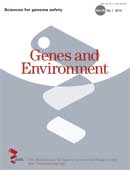Volume 36, Issue 1
Displaying 1-3 of 3 articles from this issue
- |<
- <
- 1
- >
- >|
REGULAR ARTICLE
-
2014 Volume 36 Issue 1 Pages 1-9
Published: 2014
Released on J-STAGE: February 28, 2014
Advance online publication: December 15, 2013Download PDF (397K) -
2014 Volume 36 Issue 1 Pages 10-16
Published: 2014
Released on J-STAGE: February 28, 2014
Advance online publication: January 01, 2014Download PDF (431K) -
2014 Volume 36 Issue 1 Pages 17-28
Published: 2014
Released on J-STAGE: February 28, 2014
Advance online publication: February 01, 2014Download PDF (685K)
- |<
- <
- 1
- >
- >|
